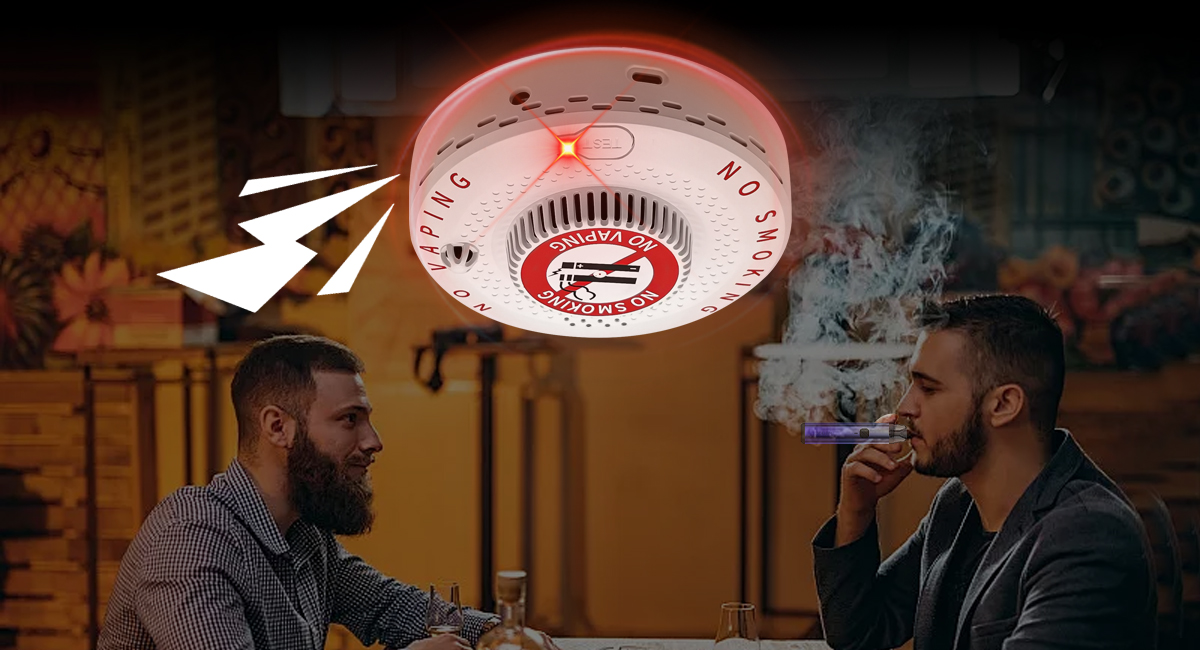
1. Detectores de vapeo
Os propietarios poden instalardetectores de vapeo, semellantes aos que se usan nas escolas, para detectar a presenza de vapor dos cigarros electrónicos. Estes detectores funcionan identificando os produtos químicos que se atopan no vapor, como a nicotina ou o THC. Algúns modelos están deseñados especificamente para detectar as partículas máis pequenas producidas polo vapeo, que os detectores de fume estándar poden non captar. Os detectores poden enviar alertas cando detectan vapor no aire, o que permite aos propietarios controlar as infraccións relacionadas co vapeo en tempo real.
2. Probas físicas
Aínda que vapear produce cheiros menos perceptibles en comparación con fumar, aínda pode deixar sinais:
• Residuos en paredes e teitosCo tempo, o vapor pode deixar un residuo pegañento nas paredes e nos teitos, especialmente en zonas con mala ventilación.
• OlorAínda que o cheiro da vaporización adoita ser menos forte que o do fume do cigarro, algúns líquidos electrónicos con sabor deixan un cheiro perceptible. A vaporización persistente nun espazo pechado pode causar cheiros persistentes.
• DecoloraciónVapear durante un período prolongado pode causar unha lixeira decoloración nas superficies, aínda que normalmente é menos grave que o amareleamento causado por fumar.
3. Problemas de calidade do aire e ventilación
Se o vapeo se realiza con frecuencia en espazos mal ventilados, pode afectar á calidade do aire, o que os propietarios poden detectar a través de cambios no sistema de climatización. O sistema podería recoller partículas do vapor, o que podería deixar un rastro de evidencias.
4. Admisión do inquilino
Algúns propietarios confían en que os inquilinos admitan que vapean, especialmente se forma parte do contrato de arrendamento. Vapear en interiores incumprindo un contrato de arrendamento podería levar a multas ou á rescisión do contrato de alugueiro.
Data de publicación: 16 de outubro de 2024




